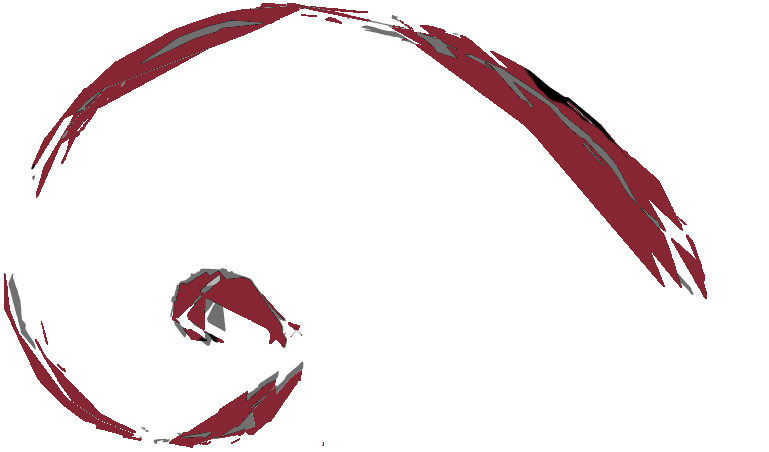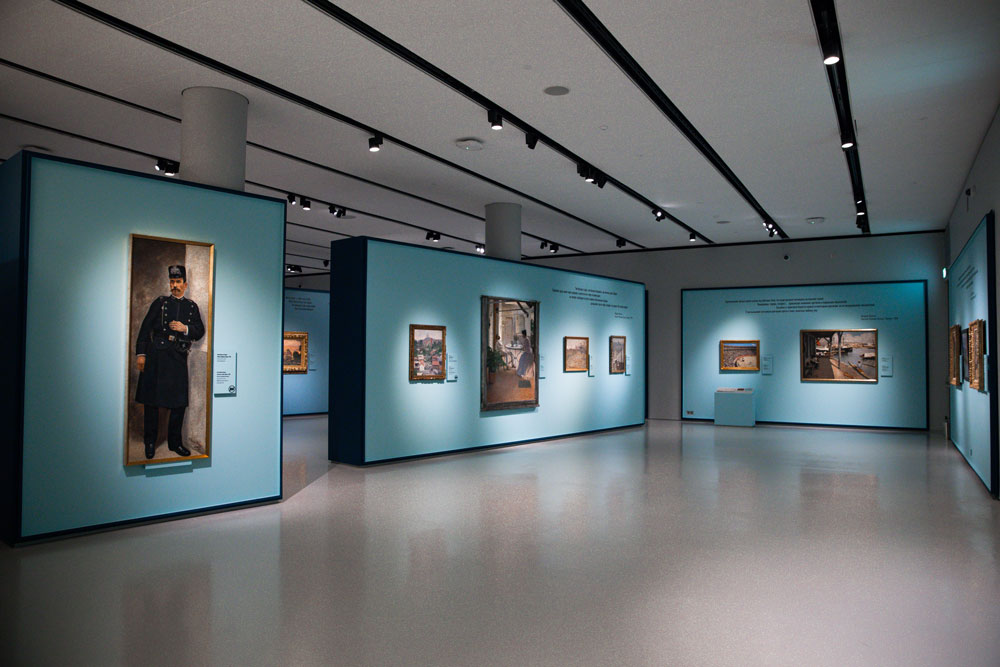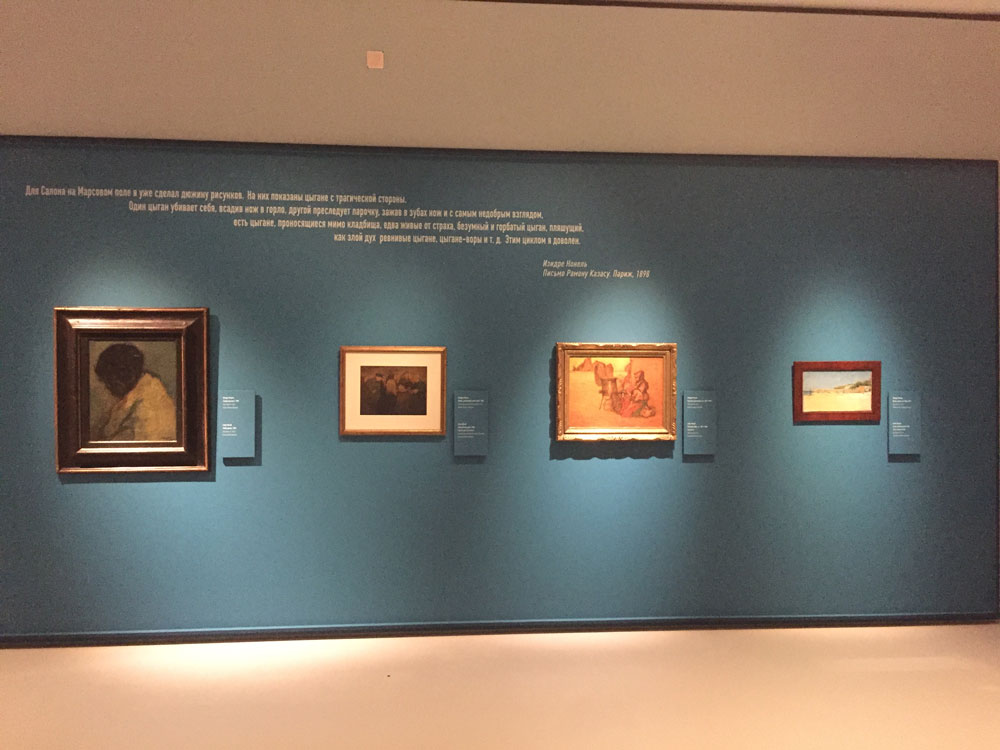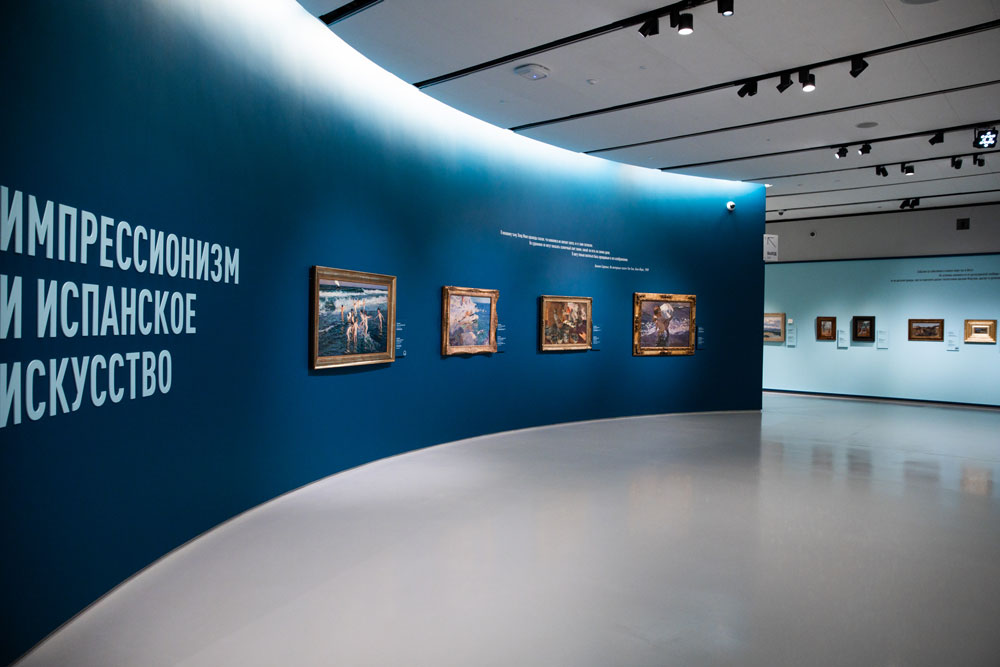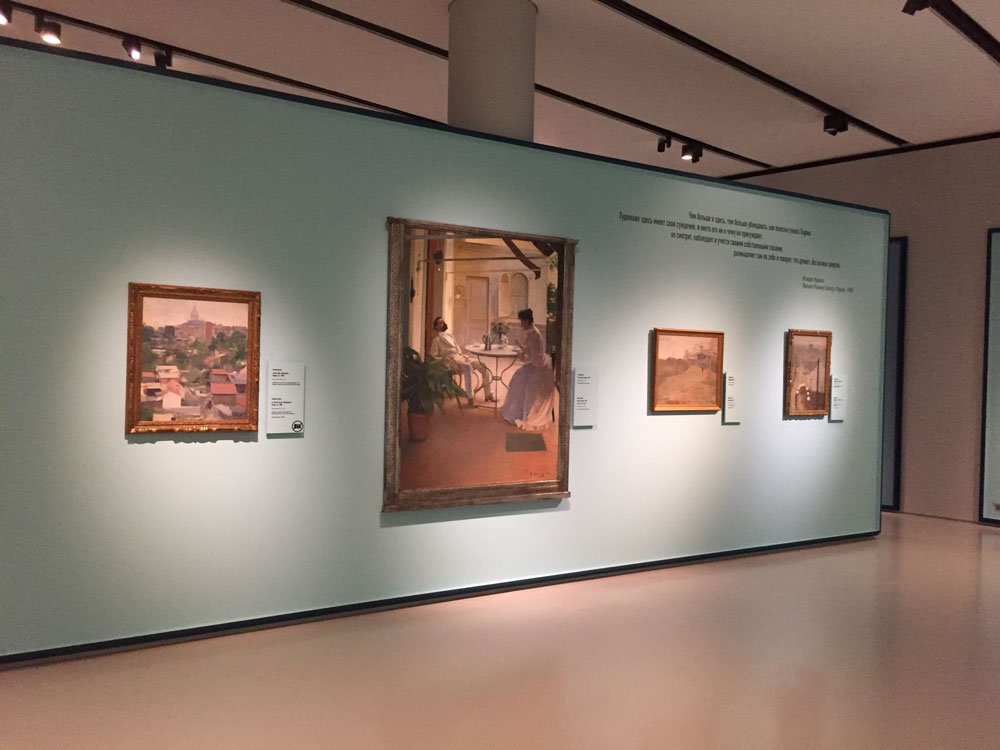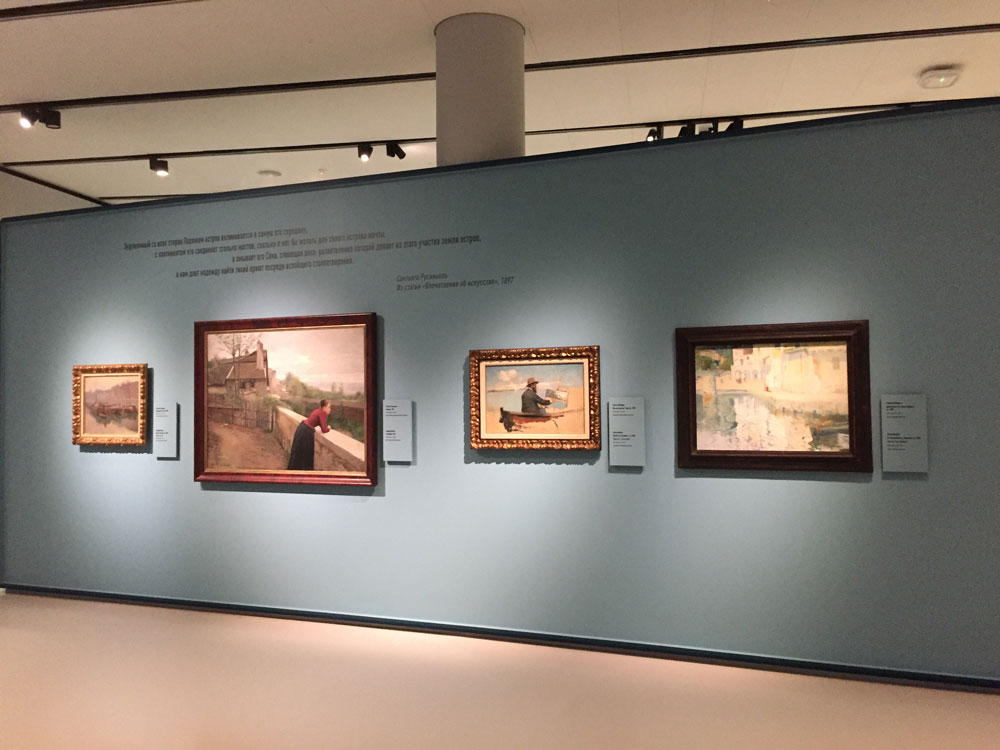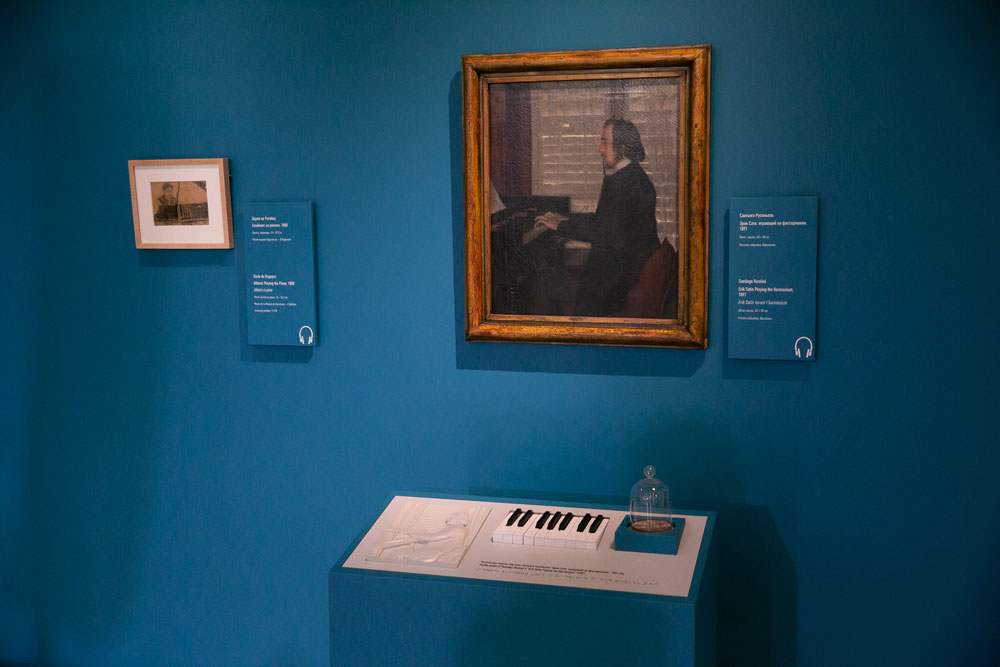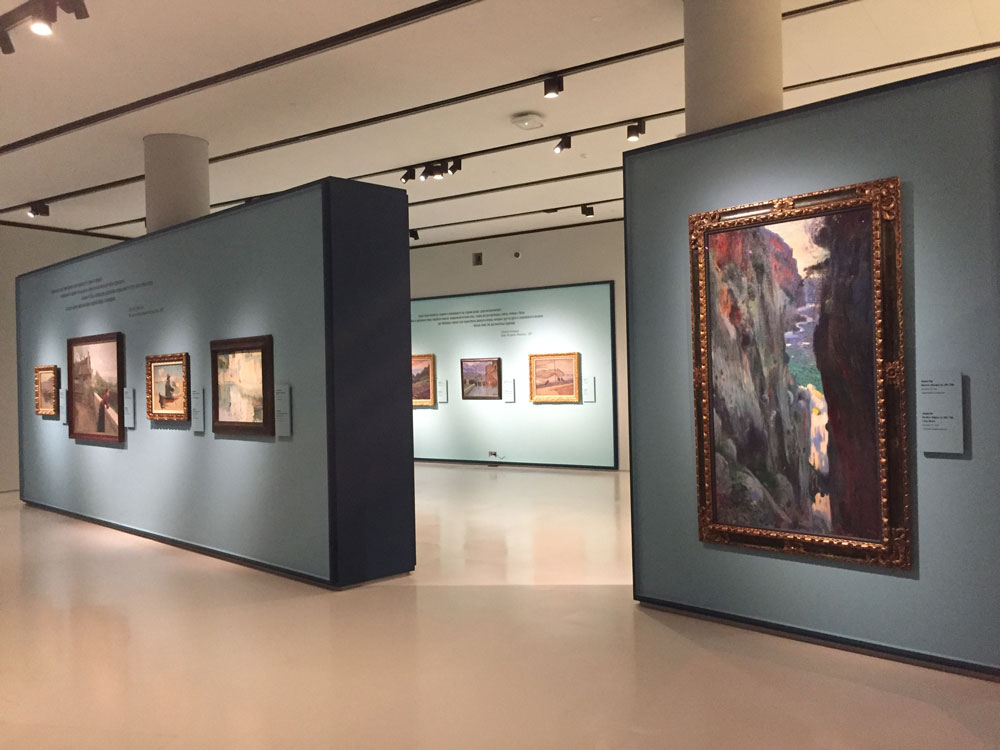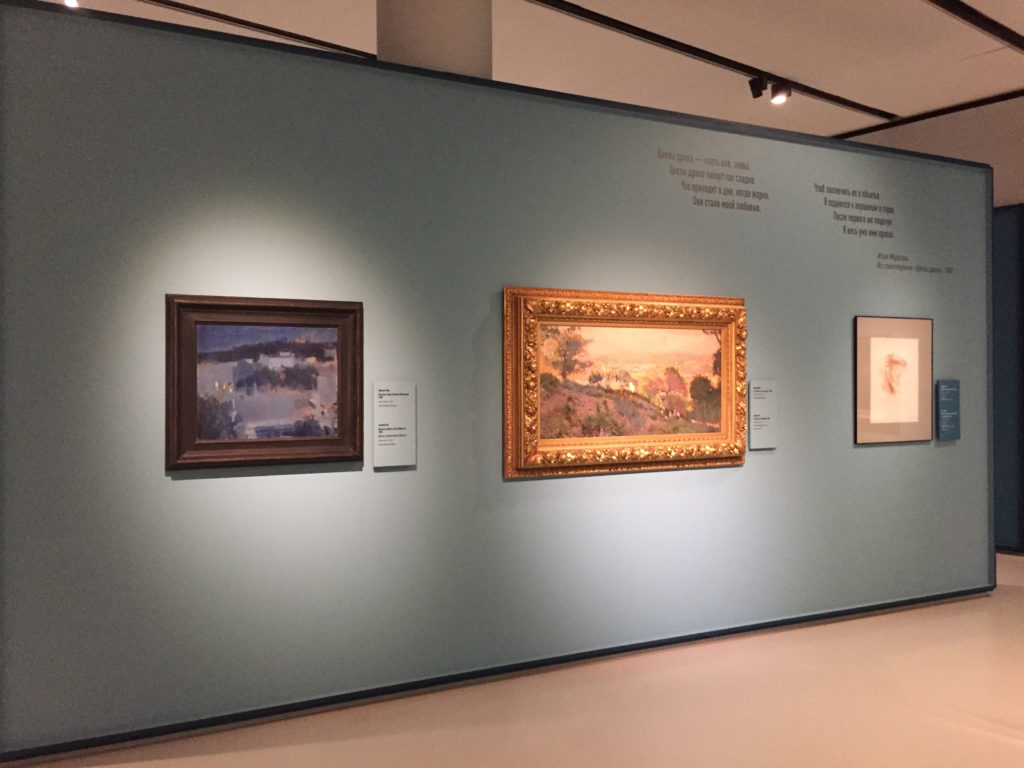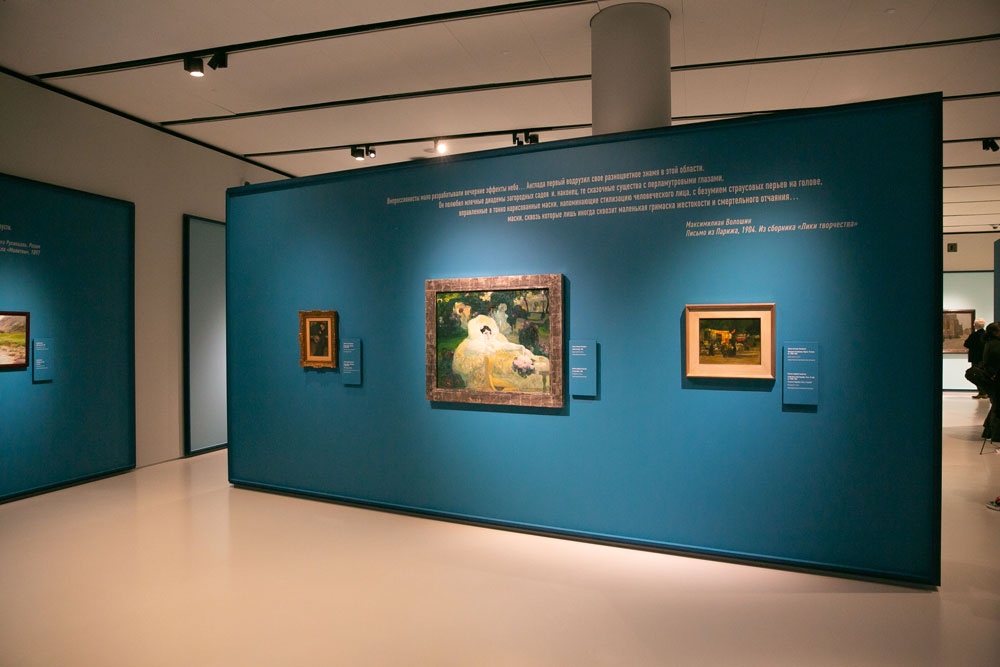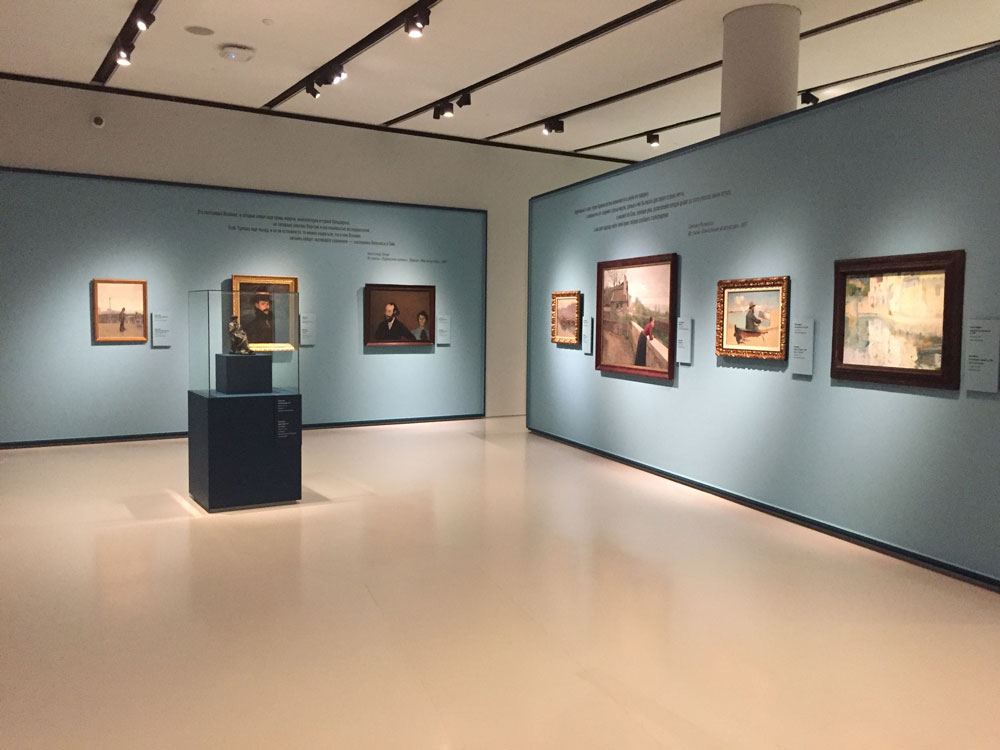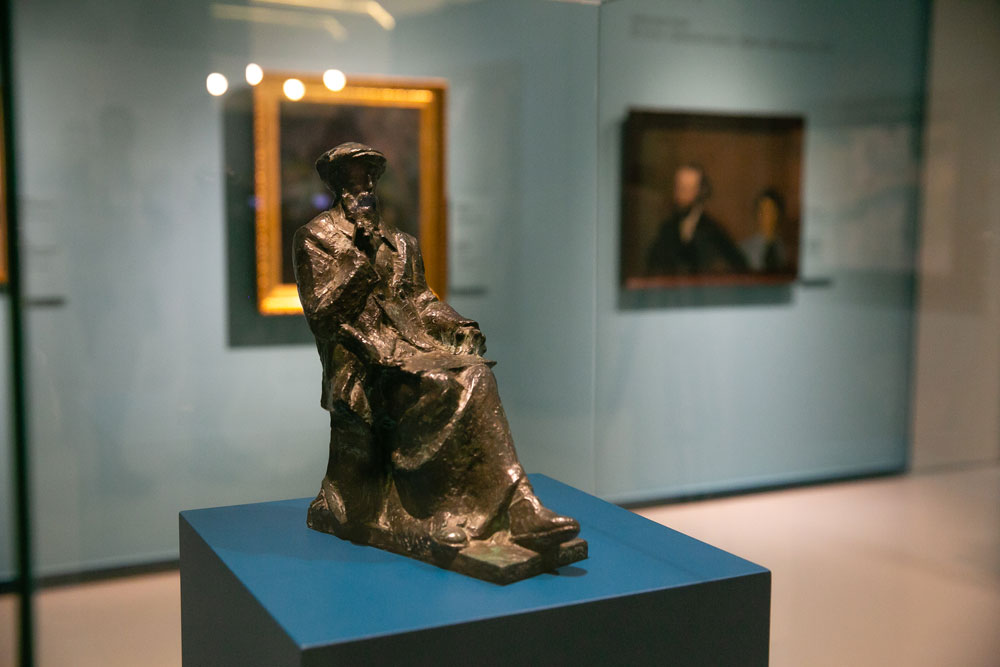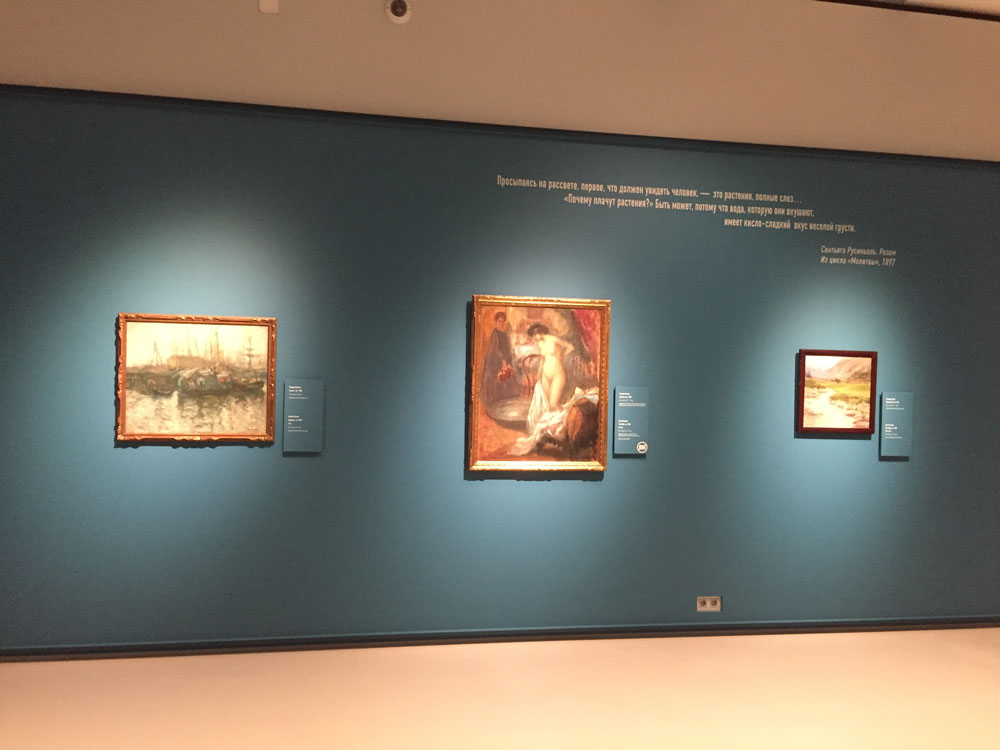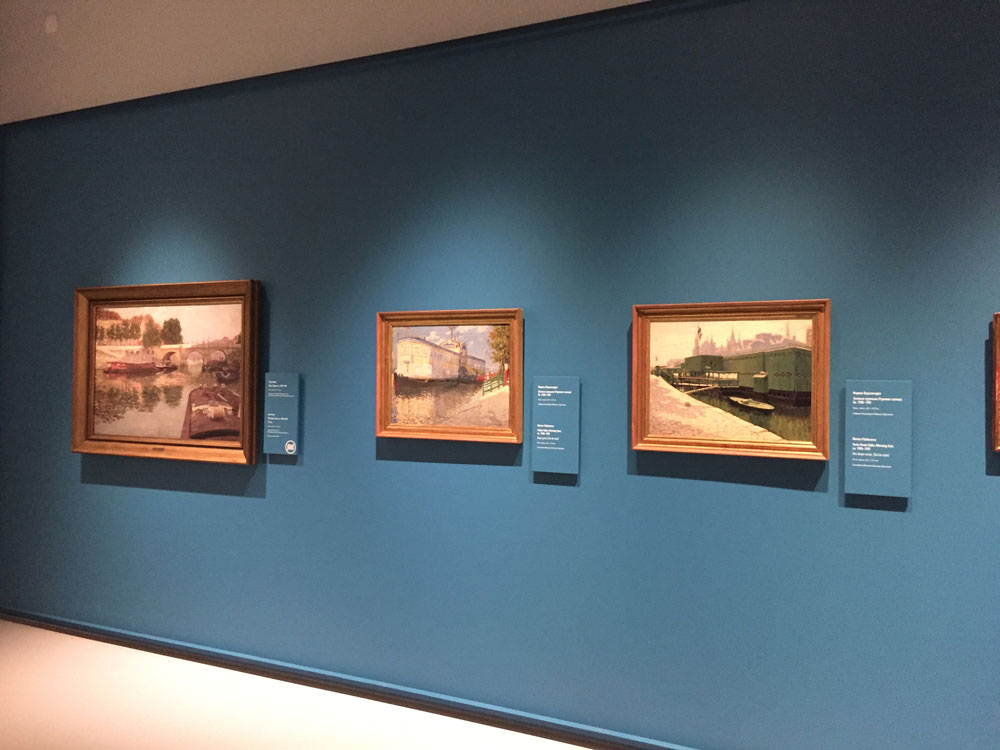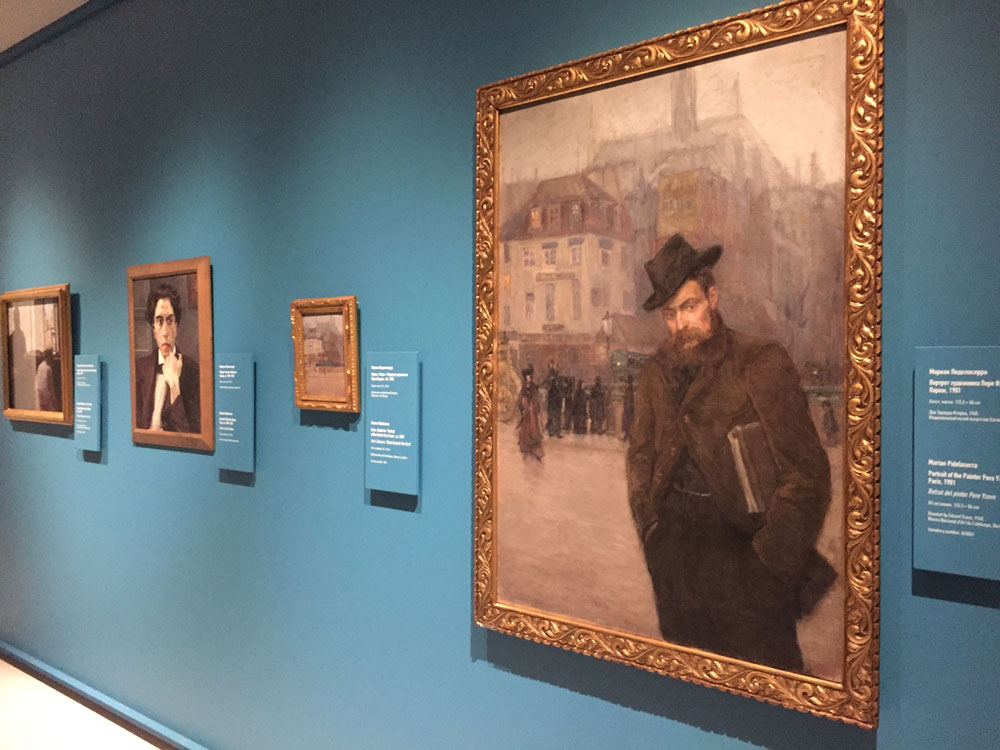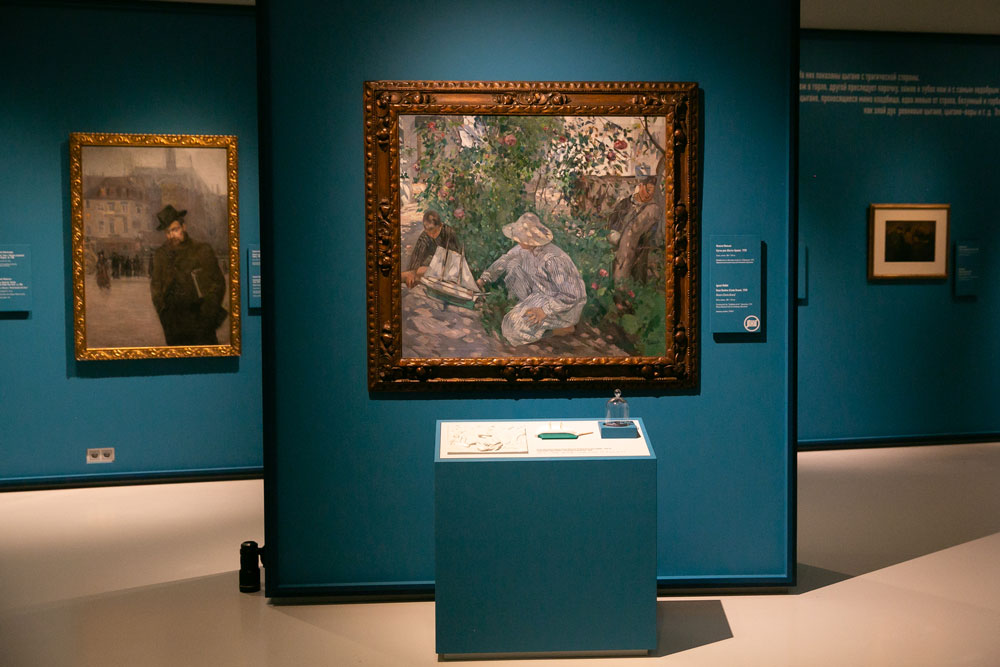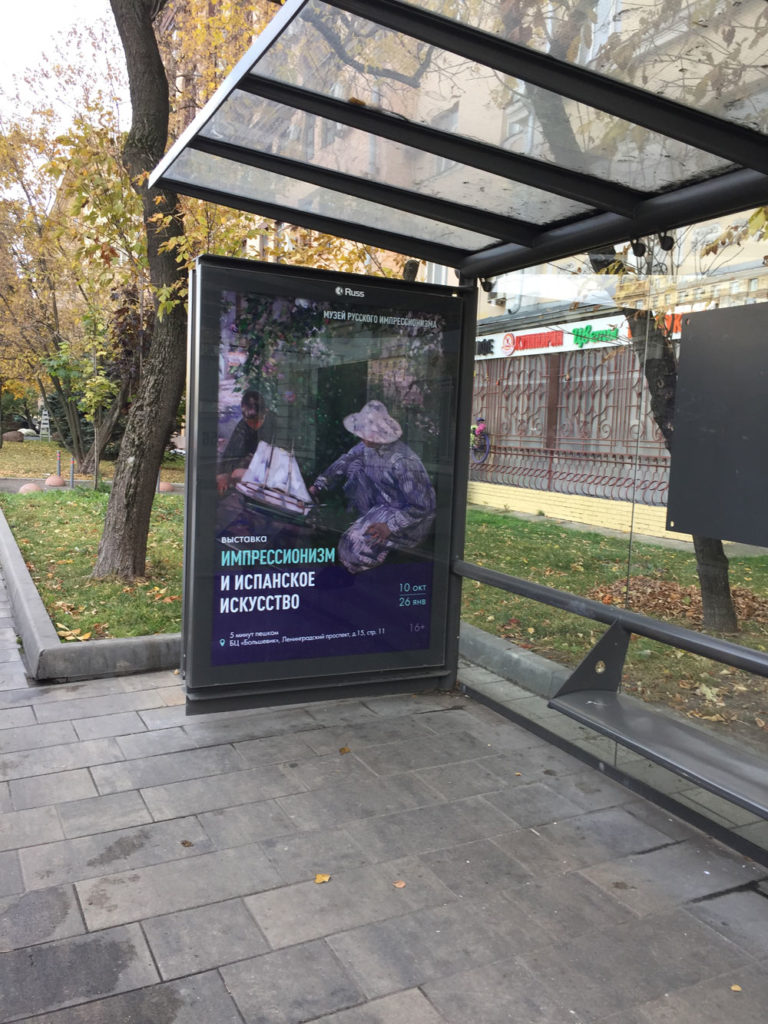Impressionism and Spanish Art
Organised by: Museum of Russian Impressionism · Aurea Cultura i Art.
Curator: Francesc Fontbona.
Project Manager: Charo Sanjuán.
With the collaboration of: Spanish Embassy in Moscow.
Bearing in mind that when discussing Impressionism in Spain, it is common to overgeneralise, this exhibition examines the relationship between this movement and Spanish art, featuring works by the following artists: Pere Vidal de Solares, Marià Fortuny, Adolfo Guiard, Ramon Casas, Santiago Rusiñol, Darío de Regoyos, Eliseu Meifrèn, Aureliano de Beruete, Ignacio Zuloaga, Hermen Anglada-Camarasa, Joaquín Sorolla, Ricard Canals, Isidre Nonell, Joaquim Mir, Marian Pidelaserra, Pere Ysern, Ignasi Mallol and Ricard Guinó.
The 61 works displayed come from different private collections and the following museums: Museu Nacional d’Art de Catalunya, Museu de Montserrat, Biblioteca Museu Víctor Balaguer, Museo Carmen Thyssen Málaga, Museo Ignacio Zuloaga Castillo de Pedraza, Museu d’Història de Girona, Museo de Bellas Artes de Asturias, Museo de Santa Cruz, Museu d’Història de Barcelona (MUHBA), Museu de la Garrotxa, Museu del Modernisme de Barcelona, Museu de la Música de Barcelona – L’Auditori, Museu d’Art Modern de Tarragona, Museo de la Real Academia de Bellas Artes de San Fernando and Pushkin State Museum of Fine Arts.
***
Édouard Manet, the great precursor of Impressionism, was an admirer of Goya. This led to the appearance of Spanish themes in his most important works. Nevertheless, it would take some time before the Spanish painters would adopt this new technique and before French Impressionism would make its way into Spanish exhibitions.
In any case, a number of Spanish artists formed friendships with the Impressionists. Pere Vidal de Solares, a Catalan painter from Cuba, was portrayed by Renoir in the Bal du Moulin de la Galette (1876), and the Puerto Rican painter Francisco Oller took on the style of Cézanne and Pissarro, whom he had met at the Café Guerbois, the Atelier Gleyre and the Académie Suisse. Moreover, according to Juan de la Encina, when Adolfo Guiard went to Paris in 1878, he met Degas; and the Girona-born sculptor Ricard Guinó earned recognition in the courts as the co-author of the works he produced under the instructions of Renoir.
Marià Fortuny, who died in 1874, the same year that the Impressionists held their first collective exhibition titled “Chez Nadar”, had developed an original and uninhibited style that was virtually identical to that of the nascent Impressionism.
Darío de Regoyos was the Spanish painter with the greatest involvement in the innovative European groups. He was a regular in the experimental circles in Brussels, where he met Meunier, Van Rysselberghe, Verhaeren, Ensor, and Rops. Moreover, he cultivated friendships with Pisarro, Rodin and some of the foremost Neo-Impressionists including Seurat, Signac, and Luce.
Ramon Casas, who was very close to Impressionism, went to Paris in 1881. His Plaça de toros (1884, Museu de Montserrat) reveals an early influence of the most colourful Impressionism. Later, his most distinctive style, as seen in his Plein air (1890, Museu Nacional d’Art de Catalunya), was more closely related to the works of Whistler and Degas. His friend Santiago Rusiñol, whose style was also similar to that of Degas, took part in the Septième Exposition des Peintres Impressionnistes et Symbolistes (1894). Rusiñol additionally shared a studio in Paris with Ignacio Zuloaga in 1894.
The influence of Impressionism outside Catalonia and the Basque Country was limited, although some painters of the era, including the cosmopolitan Aureliano de Beruete and his student Joaquín Sorolla, would belatedly take on certain aspects of the new school.
In December 1897, the Catalan painters Isidre Nonell and Ricard Canals would take part in the Salon des Impressionnistes et Symbolistes. Nonell, a representative of the most innovative Catalan painting, fit in more with Expressionism than with Impressionism. Canals, on the other hand, connected with the continuity of the Impressionist scene, as he was promoted by Durand-Ruel, the leading art dealer of Impressionism.
Even so, orthodox Impressionism would not fully take root in Spain until Marian Pidelaserra and Pere Ysern made a spectacular transition to Impressionism in Paris (1899-1901). They showed their Parisian works in Barcelona at the Sala Parés (Ysern in July 1901 and Pidelaserra in February 1902). This marked the first exhibition to be held south of the Pyrenees featuring landscapes—particularly urban ones—of an Impressionism very similar to that of Monet, Sisley and Pissarro.

